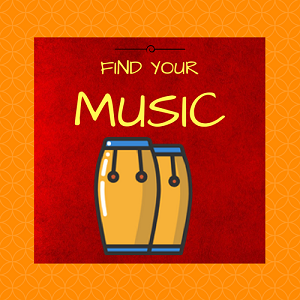Intro
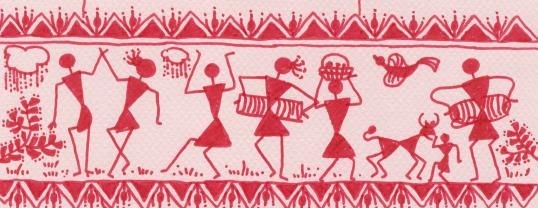
India is a nation with myriad landscapes, cultures, and soundscapes. Each and every region— separated from each other geographically and linguistically—harbors unique cultures and traditions. It manifests itself in varied forms, the most apparent being food, attire, and music (song and dance).
We at Raag Revival wish to do justice to the vibrant musical expressions latent in our country.
We are here to present the musical forms that pose as integral, indigenous expressions of a region’s culture. These may be unheard of when compared to the mainstream forms of Indian popular music – Bollywood Music and its variants, or art forms - Hindustani or Classical, too. We’ve tended towards folk forms that revel in every state, region, and have cultural, religious, spiritual, social connotations. Now, each of these forms are wholesome and substantial in and of themselves. They boast of expansive repertoires and immaculate renditions. All folk musicians are aware and involved; they exude vocal and instrumental finesse. Every folk form or composition is an example of pure art and can captivate the audience, the listener, and the consumer.
We hope to create, and provide a platform through which we can acknowledge the existence of these forms, and expose ourselves to our own flourishing sounds. To bring ourselves closer home, to let our arts thrive, is a necessary duty.
With this mindset we’ve compiled a few regional sounds, for starters, and we eventually hope to channel this space into one that not only celebrates, but also actively promotes Indian Folk Forms.
.
Our Regions
 Gujarat
Maharashtra
Bengal
Tamil Nadu
Karnataka
Kerala
Punjab
Gujarat
Maharashtra
Bengal
Tamil Nadu
Karnataka
Kerala
Punjab
More to follow!
About

Raghav Chadha - half Tamilian, half Punjabi, Raghav is a perfect blend of North and South. The blatant IT Genius of the troupe, he acted as the Website developer.
Varnika Walvekar - has lived in various parts of India and does not have any definite roots. She can't explain to you when you ask her Where are you from?' because she has experienced diverse cultures.
Rachna Chandramouli - Having roots in most parts of India, Rachna has grown up in a very musical environment. Her taste in music evolves and though questioned...she continues to find herself through it...maybe.
Nishant Pillai - Born in Kerala and brought up in Mumbai, Nishant finds all kinds of folk music to be absolutely fascinating. He is currently on the path to spiritual enlightenment.
Simran Shah - A Gujurati at heart, Simran was recently exposed to various folk forms in her region; she now welcomes any new Gujurati music styles to add to her collection at home.
Rakesh Praveen- A born and bred mallu. Music has always been an integral part of Rakesh's life since he grew up in a family filled with artists and musicians. He enjoys and creates music of all sorts.
Tanya Aravind - half-Tamilian, half-Uttar Prasheshi and brought up in Dubai, Tanya believes that an individual's playlist is their most unique and defining feature.
Gujarat
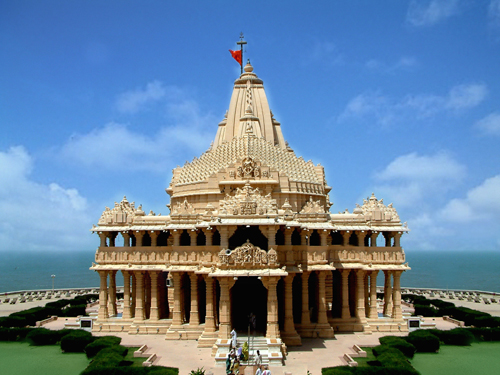
Gujarat is also known for having produced its own folk instruments besides the vast contributions to classical and folk music. It is indeed worth mentioning that wind instruments like Turi, Bungal, Pava and string instruments like Ravan Hattho, Ektaro, and Jantar, and percussion instruments like Manjira and Zanz pot drum are omnipresent in the folk sounds of Gujarat.
The Vaishnav Cult in Gujarat has produced a special variety of music, which can be classified as temple-music; an example is available on youtube with lyrics here.
The Garba is a dance form from Gujarat; derived from the Sanskrit term Garbha (womb), it is usually performed around a centrally lit lamp or statue of the goddess Shakti. It has several ties with other spiritual dances and is traditionally performed during the nine-day Hindi festival Navaratri. Either the lamp (the Garbha Deep) or an image of the goddess is placed in the middle of concentric rings as an object of veneration. An example is available on youtube.
Mara Ghat Ma Birajta,
Srinathji Yahmunaji Mahaprabhuji,
Maru Mandu Chhe Gokul Vanara Van,
Mara Tan Na Aanganiya Ma Tulsi Na Van,
Mara Praan Jeevan, Mara Ghat Ma Birajta,
Srinathji Yahmunaji Mahaprabhuji
Mara Aatam Na Aangane Sri Mahakrishnaji,
Mari Aankho Dishe Girdhari Re Dhari,
Maru Tanman Thayu Jene Vaari Re Vaari,
Mara Shyam Murari, Mara Ghat Ma Birajta,
Srinathji Yahmunaji Mahaprabhuji
Mara Praan Thaki Mane Vaishnav Vhala,
Nitya Karta Srinathji Ne Kaala Re Vaala,
Mein To Vallabh Prabhujina Kidha Chhe Darshan,
Maru Mohi Lidhu Man, Mara Ghat Ma Birajta,
Srinathji Yahmunaji Mahaprabhuji
Hun To Nitya Vithalavarni Sevaare Karun,
Hun To Aathe Samaa Keri Jhaanki Re Karun,
Me To Chitadun Srinathjine Charane Dharyun,
Jeevan Safal Karyun, Mara Ghat Ma Birajta,
Srinathji Yahmunaji Mahaprabhuji
Me To Bhakti Maaraga Kero Sanga Re Saadhyo,
Me To Pushtire Maaraga Kero Sanga Re Saadhyo,
Mane Dhod Kirtana Kero Ranga Re Laagyo,
Me To Laalaani Laali Kero Ranga Re Maagyo,
Hirlo Haatha Laagyo, Mara Ghat Ma Birajta,
Srinathji Yahmunaji Mahaprabhuji
Aavo Jivanma Laavo Fari Kadi Naa Male,
Vaarivaare Maanava Deha Kadee Naa Male,
Fero Lakhare Choraasino Maaro Re Fade,
Mane Mohan Male, Mara Ghat Ma Birajta,
Srinathji Yahmunaji Mahaprabhuji
Maari Anta Samay Keri Suno Re Arji,
Lejo Sharano Maa Shriji Baba Daya Re Kari,
Mane Tedaa Re Yam Keraa Kadi Naa Aave,
Maaro Naath Tedaave,
Mara Ghat Ma Birajta,
Srinathji Yahmunaji Mahaprabhuji,
Maru Mandu Chhe Gokul Vanara Van,
Mara Tan Na Aanganiya Ma Tulsi Na Van,
Mara Praan Jeevan, Mara Ghat Ma Birajta,
Srinathji Yahmunaji Mahaprabhuji
Srinathji Bolo, Shri Yahmunaji Bolo,
Srinathji Bolo, Shri Yahmunaji Bolo,
Srinathji Bolo, Shri Yahmunaji Bolo
Maharashtra
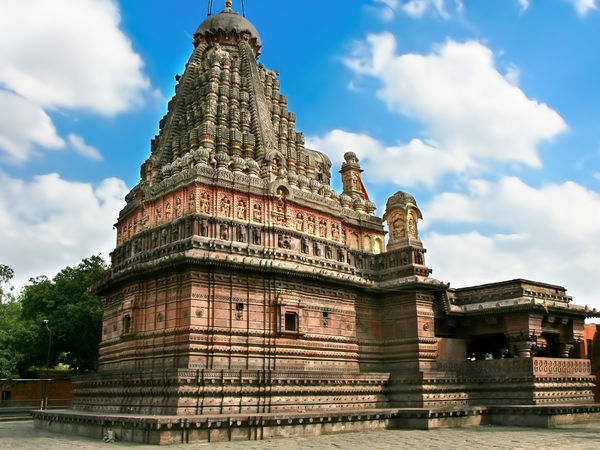
Every festive occasion is accompanied by song, music and dance in Maharashtra. Talking about the music of Maharashtra won't complete without the mention of Natya Sangeet, numerous folk songs and its great saint poets. Although music in Maharashtra like Marathi literature has an ancient tradition, the popularity of classical music in Maharashtra began through Gwalior. Miraj town of Sangli district is known as the 'town of music'. The world famous Indian musical instrument the Sitar is made in this town.
Folk songs are an inseparable part of the daily lives of the rural Maharashtra. Folk forms like lavani, nautanki and tamasha music are very famous. However, a lot of these art forms are dying out as performers are finding it difficult to sustain
Lavani and Povada are the most popular folk songs that entertain the village-folks in Maharashtra. Bhaleri, a folk-song is sung to cheer the farmers working in the field. They also sing special songs during the harvesting time.
some links
you may find
interesting
Bengal
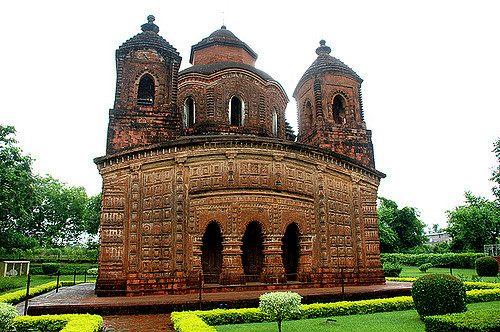
Rabindra Sangeet : They are songs written and composed by Rabindranath Tagore. They include components of Hindustani classical music and Bengali folk music to produce a distinctive type of music. Many of his songs have been influenced by Baul music, a type of Bengali folk music. An example is Pagla Hawar Badol Dine with lyrics here.
Baul music represents a particular type of folk song, carrying influences of Hindu bhakti movements as well as the shuphi, a form of Sufi song. Songs are also used by the spiritual leader to instruct disciples in Baul philosophy, and are transmitted orally. Baul poetry, music, song and dance are devoted to finding humankind’s relationship to God, and to achieving spiritual liberation. To experience it, listen to Tomay Hrid Majhare Rakhibo with lyrics here.
Bhatiali - a type of Bengali folk music popular among coastal fishermen and river-dwellers. Bhatiali comes from the word Bhata, which means ebb or downstream. Check out Majhi tor nam Janina.
Pagla Hawar Badol Dine,
Pagol Aamaar Mon Jege Othe (2)
Chena Shonar Kon Baire,
Jekhane Poth Nai Nai Re (2)
Sekhane Okarone Jai Chhute
Pagla Hawar Badol Dine Pagol Aamaar Mon Jege Othe
Ghorer Mukhe Aar Ki Re,
Kono Din Se Jabe Phire (2)
Jabe Na Jabe Na,
Dewaal Joto Sab Jabe Toote (2)
Jabe Na Jabe Na
Pagla Hawar Badol Dine,
Pagol Aamaar Mon Jege Othe
Brishti Nesha Bhora Sondhya Bela,
Kon Balaramer Ami Chela (2)
Amar Swapno Ghire Nache Maatal Jute,
Jato Matal Jute (2)
Ja Na Chaibaar Tai Aji Chai Go,
Ja Na Paibar Tai Kotha Pai Go (2)
Pabo Na Pabo Na Aa Mori,
Asombhaver Pai Matha Kute
Pabo Na Pabo Na
Pagla Hawar Badol Dine,
Pagol Aamaar Mon Jege Othe (2)
Ore chere dile sonar gour
Khepa chere dile sonar gour
Amra aar pabo na, aar pabo na
Tomay hrid majhare rakhibo chere debo na
Tomay hrid majhare rakhibo chere debo na
Ore chhere dile sonar gour aar pabo na
Khepa chhere dile sonar gour aar pabo na
Na na aar pabo na
Tomay hrid majhare rakhibo chere debo na
Tomay hrid majhare rakhibo chere debo na
Bhubono mohono gora
Kon moni jonar mono hora
Bhubono mohono gora
Kon moni jonar mono hora
Moni jonar mono hora
Ore radhar preme matowara
Chand gour amar radhar preme matowara
Dhulay jay bhai goragori
Jete chaile jete debo na
Na na na jete chaile jete debo na
Na na jete debo na
Tomay hrid majhe
Tomay hrid majhe rakhibo chere debo na
Tomay hrid majhare rakhibo chere debo na
Jabo brojer kule kule
Jabo brojer kule kule
Amra makhbo paaye ranga dhuli
Makhbo paaye ranga dhuli
Ore pagol mon...
Jabo brojer kule kule
Amra makhbo paaye ranga dhuli
Ore noyonete noyon diye rakhbo tare
Ore noyonete noyon diye rakhbo tare
Chole gele, chole gele jete debo na na na
Jete debo na
Tomay hrid majhare rakhibo chere debo na
Tomay bokkho majhe rakhibo chere debo na
Je dake chand gour bole
Ogo bhoy ki go taar brojer kule
Je dake chad gour bole
Ogo bhoy ki go taar brojer kule
Bhoy ki go taar brojer kule
Ore dwijo bhushon chand bole
Ore dwijo bhushon chade bole
Choron chhere debo na na na chere debo na
Tomay bokkho majhe
Tomay bokkho majhe rakhibo chere debo na
Tomay hrid majhare rakhibo chere debo na
Ore chere dile sonar gour
Khepa chere dile sonar gour
Amra aar pabo na, aar pabo na
Tomay hrid majhare rakhibo chere debo na
Tomay bokkho majhe rakhibo chere debo na
Tomay hrid majhare!
Tamil Nadu
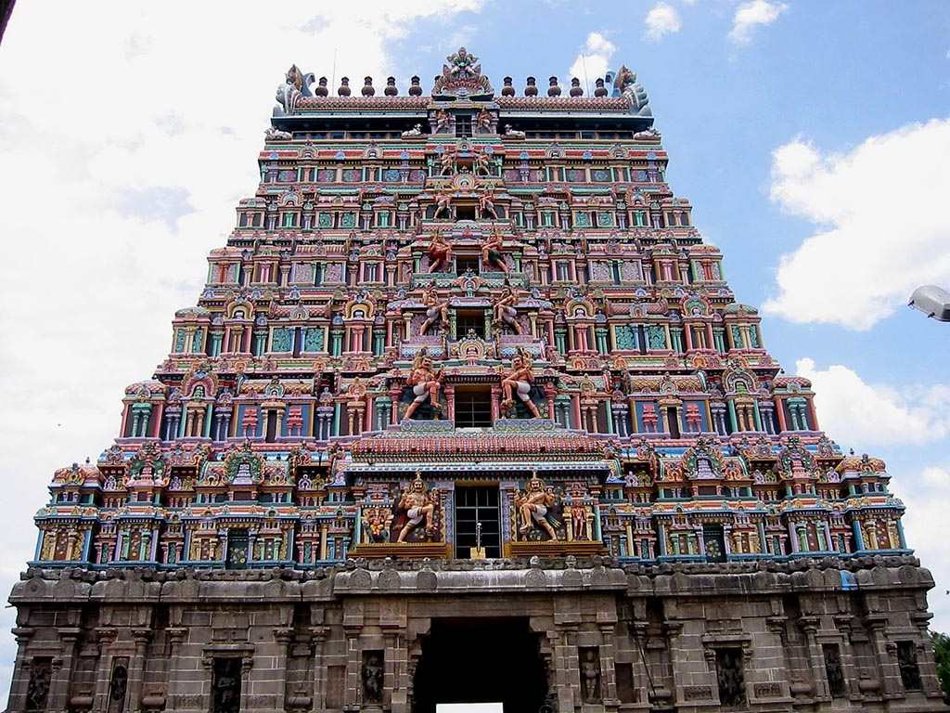
The Pulayar perform melodies, called “Talams”, are said to come from the cooing of birds. Each Talam is named after a deity, including Kunhanada talam, Mangalanada talam and Karaganachi talam. Hear one here.
The “Urumee Mellam” is one of the more popular forms of folk music in rural Tamil Nadu, and the ensemble is most often played with an urumee (an hourglass -shaped drum) and the nadaswaram (a double reed wind instrument). Listen to an example.
Villu Paatu (Bow Song) is an ancient form of musical story-telling where narration is interspersed with music. The songs sung mostly in Villu Paatu praise a god or tell a story. The main singer here is accompanied by a chorus, musical instrument and a main instrument, the Villu or Bow, fixed with bells. Here's an example.
Kerala
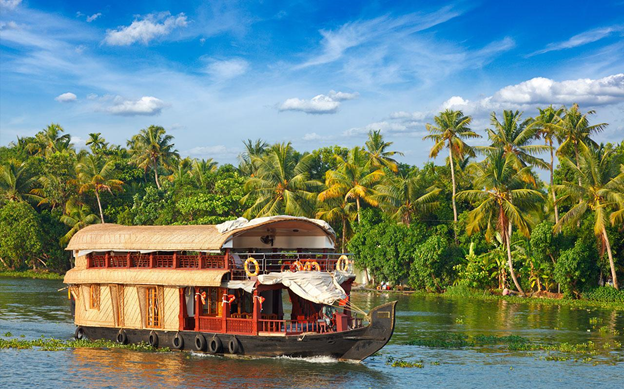
Nadan Pattu, (nadan-native, pattu-song), Kerala’s folk songs, are sung across the state, with a resigned passion, and devotion. There are several kinds of Folk Forms, each meant for a different, specific purpose. Farmers invoke the rain gods, oarsmen sing for stable seas, songs accompany almost the Temple rituals, and tales about the State’s legend, too, are sung. Few songs date back almost 600 years, the tradition has stayed alive, passed on through generations.
Aadu Pambe is one of the most popular folk tunes to emerge out of Kerala. The song reminds us of our relationship with nature, urging us to live amicably and attain higher knowledge. Listen to it here.
Purely devotional in nature, Sopana Sangeetham was a form of sophisticated music that arose in Kerala. Sopana refers to the steps that lead to a shrine, and metaphorically, could stand for an individual’s religious/spiritual accession, and Sangeetham means music. Predominantly sung at temple steps, Sopana Sangeetham is a mode of offering, to the divine. An example can be found here.
Vanchipattu are the songs sung by the rowers, during Kerala’s celebrated boat races. Sung in unison, in a charged chorus, these songs uplift the atmosphere, and motivate all around.
Kuttanadan Punchayile is the most popular of these boat song, and has recently also been reworked by many artists. Check it out here.
Karnataka
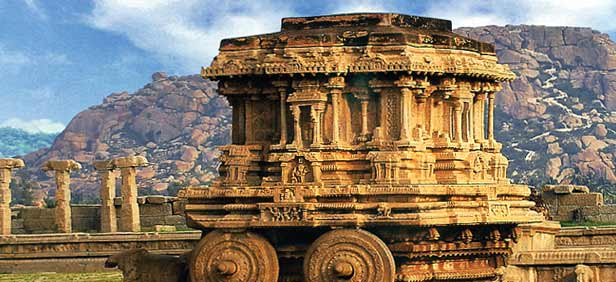
Dollu Kunitha is a major form of folk-dance performance in Karnataka. Dollu Kunitha is performed mainly by men and women of the Kuruba community of Nothern Karnataka. Dollu Kunitha in Karnataka is generally performed to commemorate an auspicious event. Explore it here.
Puja Kunitha is a popular ritualistic folk dance of Karnataka practiced largely around Bangalore and Mandya districts. It is extremely colorful and visually delightful.
Visual splendor is emphasized at the expense of elaborate oral narration. Puja Kunitha in Karnataka is ritually used to worship the cult of the Shakti. Karnataka's Puja Kunitha is an important part of the Kunitha tradition of the state which literally means ritualistic folk dances. Here's an example.
Pata Kunitha in Karnataka is a popular folk-dance form extremely popular among the inhabitants of the Mysore region. Like other Kunithas or dance-drames with a ritualistic overtone, the original significance of Pata Kunitha is primarily religious. However, there is not much of a narration that is used and the emphasis is on the rhythm and the skill of the dancers. Check it out through this link.
The above links are only three of the many folk dances that Karnataka is known for, each performed to beat, melody or rhythm of its own unique distinction.
Punjab
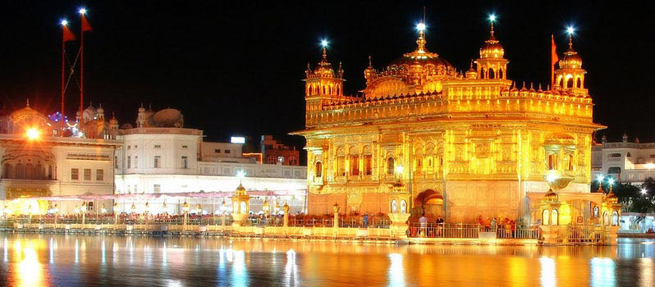
The Punjabi folk music has something to offer for every occasion and to every generation. There are songs for birth, death, marriage. There are also songs that speak about the bravery and heroism of the Punjabi males.
Features of Musical Style
The beats involved in the folk dance of Punjab are not very complex. The beats followed in the Bhangra dance are little complex in comparison to other kinds of folk dances performed as part of Punjabi folk dances.
The most traditional Punjabi music includes the rhythms of Heer and Mirza. There are not many music composers who work for enhancing the new music for Punjabi Folk and this is the reason that the rhythm involved in the Punjabi folk has been similar and has been played for ages and the only major difference involved is the change in lyrics.
Folk Songs
There are Punjabi folk songs that have been specifically designed for particular occasions like birth, wedding ceremony, death, expressing emotions of love, detailing of beauty, social ceremonies, lifestyle, festivals and fairs. There have been specific folk songs that are linked to Punjabi’s professional social groups.
Check out these links
Contact
Use this space to reach out to us; send us anything you'd like that you feel helps further our mission.
Elements
Text
This is bold and this is strong. This is italic and this is emphasized.
This is superscript text and this is subscript text.
This is underlined and this is code: for (;;) { ... }. Finally, this is a link.
Heading Level 2
Heading Level 3
Heading Level 4
Heading Level 5
Heading Level 6
Blockquote
Fringilla nisl. Donec accumsan interdum nisi, quis tincidunt felis sagittis eget tempus euismod. Vestibulum ante ipsum primis in faucibus vestibulum. Blandit adipiscing eu felis iaculis volutpat ac adipiscing accumsan faucibus. Vestibulum ante ipsum primis in faucibus lorem ipsum dolor sit amet nullam adipiscing eu felis.
Preformatted
i = 0;
while (!deck.isInOrder()) {
print 'Iteration ' + i;
deck.shuffle();
i++;
}
print 'It took ' + i + ' iterations to sort the deck.';
Lists
Unordered
- Dolor pulvinar etiam.
- Sagittis adipiscing.
- Felis enim feugiat.
Alternate
- Dolor pulvinar etiam.
- Sagittis adipiscing.
- Felis enim feugiat.
Ordered
- Dolor pulvinar etiam.
- Etiam vel felis viverra.
- Felis enim feugiat.
- Dolor pulvinar etiam.
- Etiam vel felis lorem.
- Felis enim et feugiat.
Icons
Actions
Table
Default
| Name |
Description |
Price |
| Item One |
Ante turpis integer aliquet porttitor. |
29.99 |
| Item Two |
Vis ac commodo adipiscing arcu aliquet. |
19.99 |
| Item Three |
Morbi faucibus arcu accumsan lorem. |
29.99 |
| Item Four |
Vitae integer tempus condimentum. |
19.99 |
| Item Five |
Ante turpis integer aliquet porttitor. |
29.99 |
|
100.00 |
Alternate
| Name |
Description |
Price |
| Item One |
Ante turpis integer aliquet porttitor. |
29.99 |
| Item Two |
Vis ac commodo adipiscing arcu aliquet. |
19.99 |
| Item Three |
Morbi faucibus arcu accumsan lorem. |
29.99 |
| Item Four |
Vitae integer tempus condimentum. |
19.99 |
| Item Five |
Ante turpis integer aliquet porttitor. |
29.99 |
|
100.00 |

